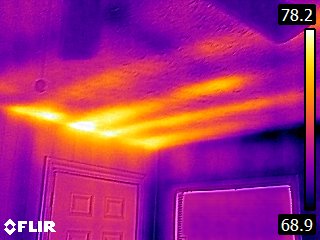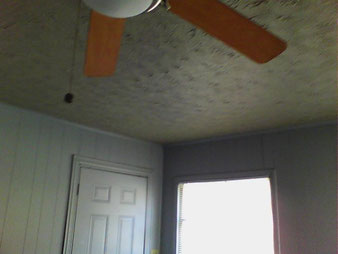FREE INFRARED SURVEY WITH EVERY HOME INSPECTION

Every Home Inspection by Advantis Home Inspections, PLLC. includes a FREE Infrared thermographic evaluation
(a $175.00 value), performed by a highly trained and Certified Residential Thermographer. A FLIR E8 infrared camera is used
to see anomalies with more detail and sharpness of focus, than other inspectors can with their cheap IR cameras This gives you a better, more thorough, more accurate home
inspection.
Thermal imaging cameras work by detecting heat signatures and displaying them as a gradient scale, with lighter colors signifying areas that are more hot and darker colors signifying cooler areas.
As a home inspector, it is my job to identify serious defects, but sometimes defects may be completely hidden in plain sight. Infrared cameras assist in identifying these hidden defects. But don't be fooled by others claiming to do IR scans, its not just taking IR pictures, its about having the training and experience to interpret the meaning of the anomalies found.
Feel free to give me a call if you have any questions.


hOW i USE INFRARED
INFRARED THERMOGRAPHIC EVALUATION - SCOPE AND LIMITATIONS
OBJECTIVE: The objective of this evaluation is fourfold:
-
Identify thermal differences in walls and ceilings to detect insulation that is not performing as designed, or missing.
-
Identify and report a THERMAL ANOMALY that may indicate moisture accumulation in evaluated areas (when used with a moisture meter).
-
Verify heat output/intake of heating system at registers within home. The evaluation ONLY tests for heat
system function, not specific temperature differences. -
Identify thermal gradients (hot spots) within MAIN electrical panel box. The inspection ONLY includes a
thermal scan of main panel box.
EVALUATION SCOPE: Inspector will use a FlIR E8 Thermal Imager on inspected property to evaluate main
electrical panel, heating system function, and to evaluate
walls and ceilings within interior of the home that
directly abut unconditioned space. Walls and ceilings that do
not directly abut unconditioned space (interior walls
and ceilings) are not included in this evaluation. This inspection is NOT
an energy audit.
THERMOGRAPHY LIMITATIONS Infrared thermography detects a
temperature difference at the surface of
the evaluated areas and components. Thermography is not an X-ray or similar technology. A thermal
imager
cannot detect conditions inside evaluated areas and components that do not produce a temperature difference at the surface of the evaluated areas and components. A thermal imager cannot detect conditions behind obstructions, such as furniture, pictures, and other owner belongings, that
obscure the surface of evaluated areas
and components.
A temperature difference of at least 18°F should exist between the inside wall surface and outside wall surface temperature of the evaluated areas to provide an accurate evaluation. This temperature difference will be estimated by comparing the home's interior surface temperature and the exterior surface temperature. The estimated interior/exterior temperatures will be recorded on first page of report. Evaluations performed when the temperature difference is less than 18°F may not produce an accurate evaluation.
Evaluation of moisture infiltration requires that the evaluated areas
have significant moisture accumulation and
that the moisture accumulation produces a detectable temperature difference at the surface
of the evaluated areas
at the time of the evaluation.
Evaluations performed without recent precipitation, evaluations of areas
with minor
moisture infiltration, evaluation of areas where moisture infiltration is intermittent or seasonal, and evaluation of
areas under similar conditions may not detect moisture infiltration.
Inspector will use his best efforts to completely and accurately evaluate
in-scope areas and components; however,
INSPECTOR MAKES NO WARRANTY OR GUARANTEE OF ANY KIND, IMPLIED OR OTHERWISE, regarding the completeness and accuracy of the thermographic evaluation.
IN CONCLUSION
It is important to understand that, like all other types of inspections, infrared technology has its limitations. A good inspector does not rely solely on infrared technologies over other inspection tools and procedures. Infrared should be used in conjunction with all inspection tools, procedures, and experience of the inspector, to get the most informed results. When used properly, by a trained and Certified Residential Thermographer, infrared can help reveal issues that you may never be aware of using non-infrared technologies.
